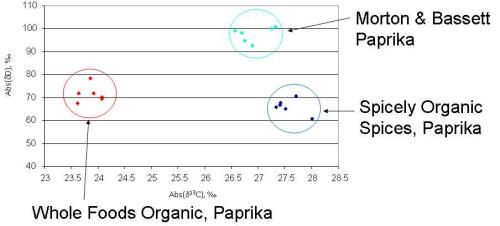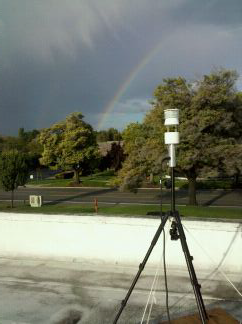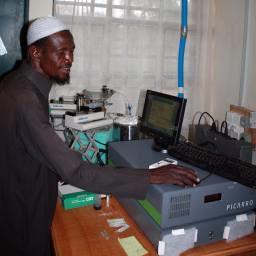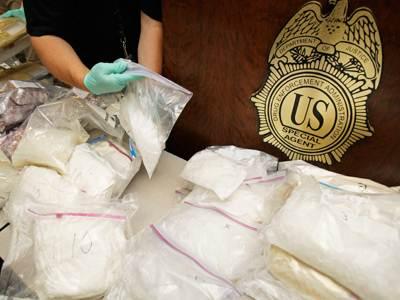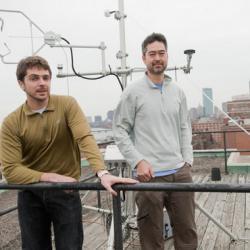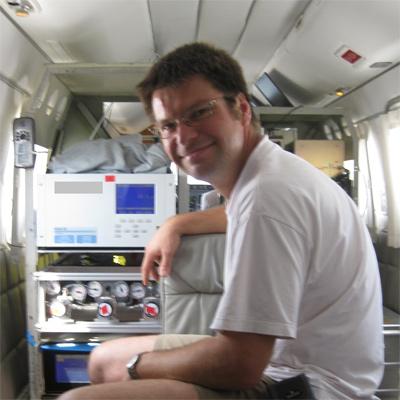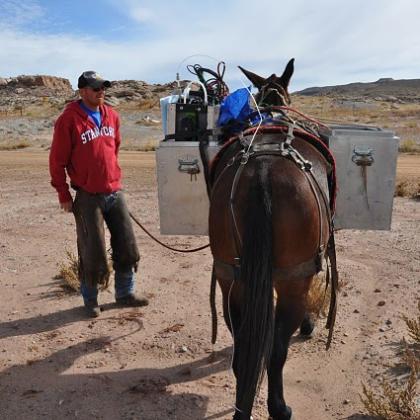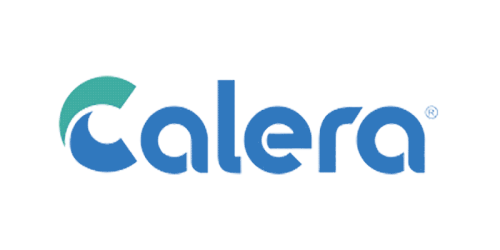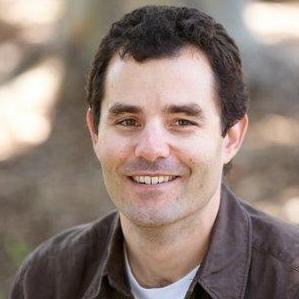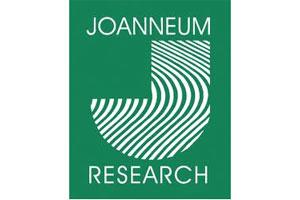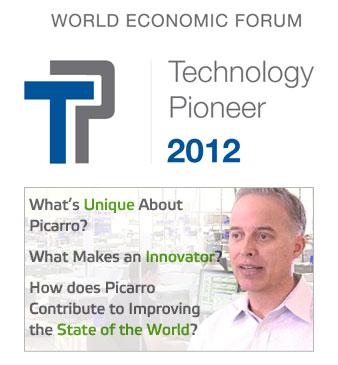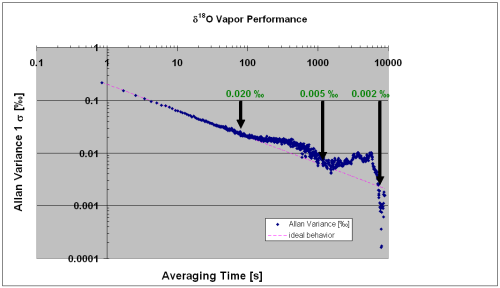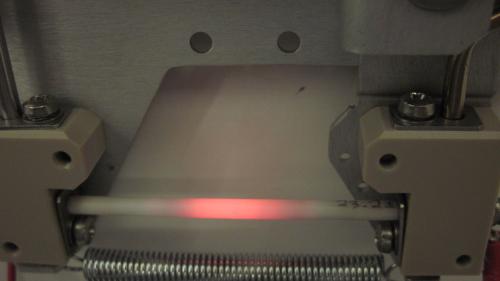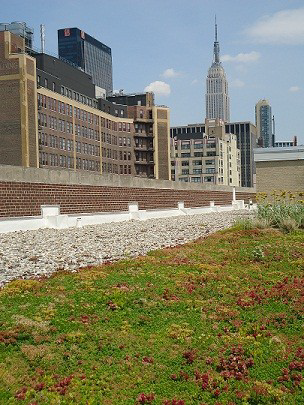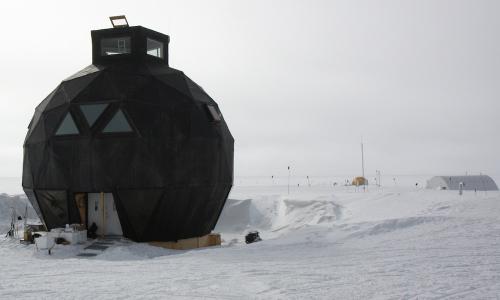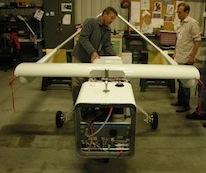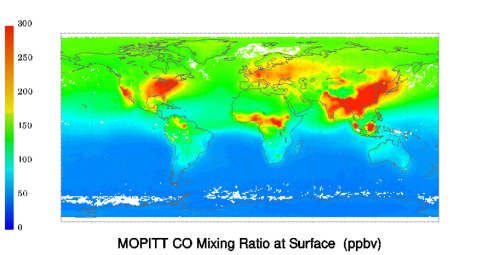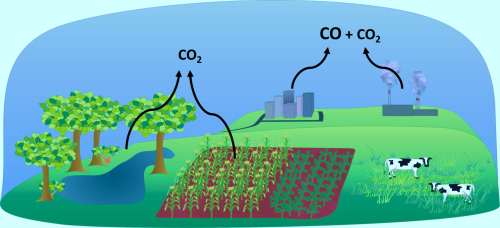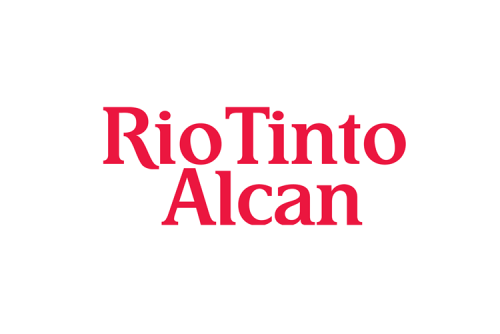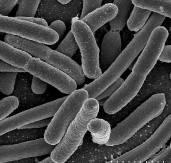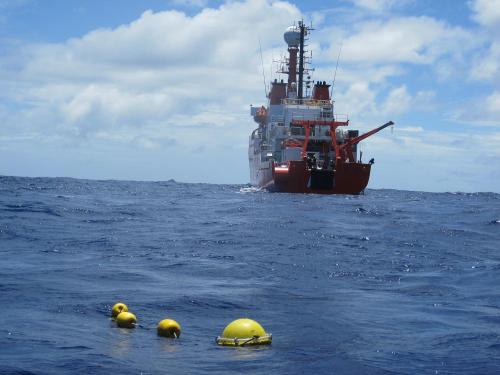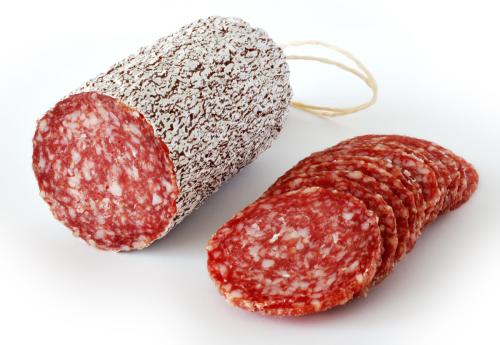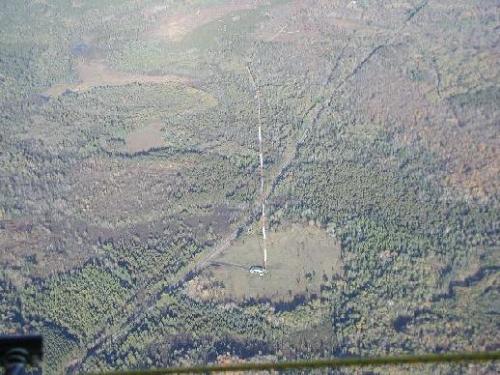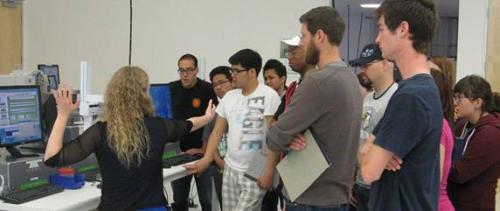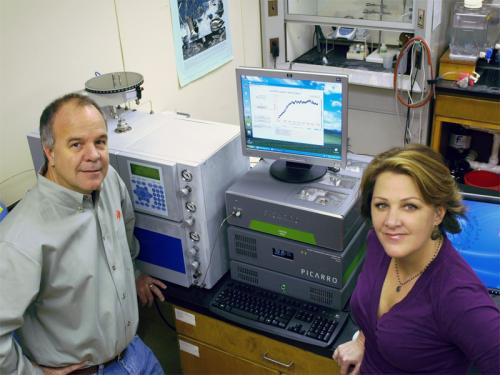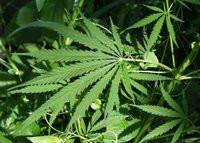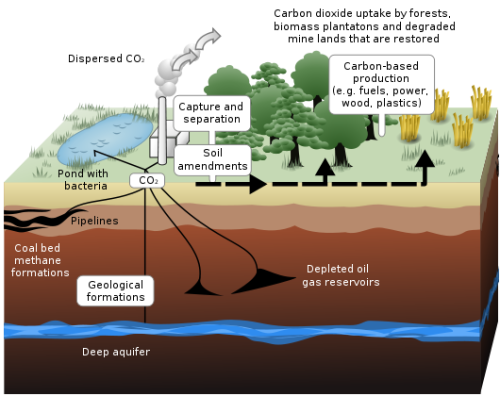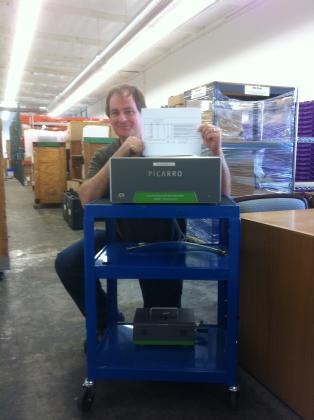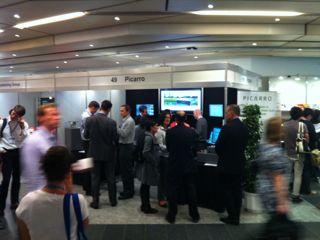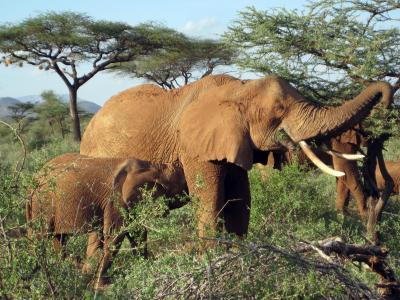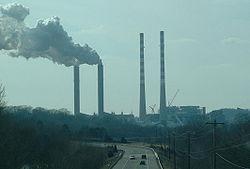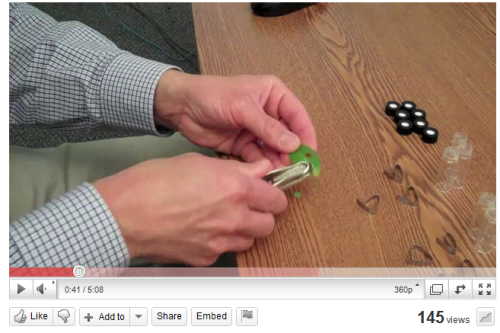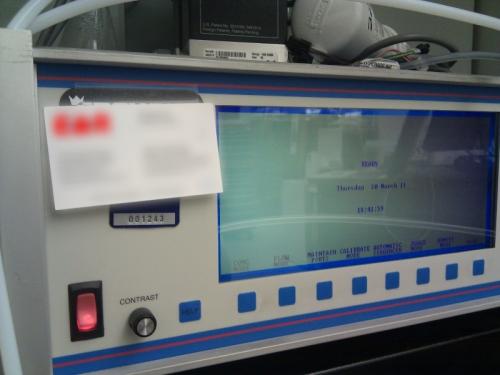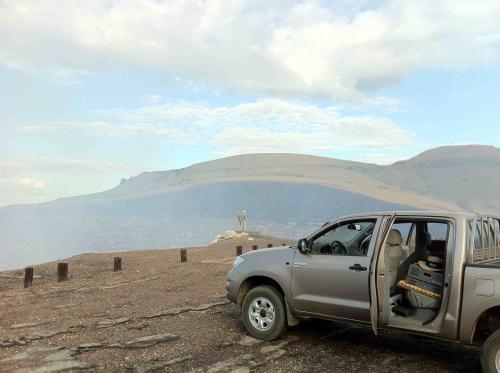- 3105 Patrick Henry Dr. Santa Clara, CA 95054 USA
- +1 408 962 3900
- info@picarro.com
- Careers
- BlogTOKYO, JAPAN — I'm interested in composition, transformation, and transport in the troposphere, lower part of the Earth's atmosphere. This spans a wide range of areas including air quality in Asia, monitoring of reactive trace gases and aerosols, standardization of trace gases for atmospheric chemistry, and the intercation of climate change with air quality, among other topics.
HACCP: Use Stable Isotopes to Dig Deeper Into Your Supply Chain.
BlogDuring a speech on Food Safety1, Michael Taylor, Deputy Commissioner for Foods for the U.S. Food and Drug Administration (FDA) discussed the benefits of Hazard Analysis and Critical Control Point programs – HACCP.
Food Safety And Modernization Act. Neither safe nor modern?
BlogThe following is a transcript of my comments at the Nov 2nd 2011 Stakeholders Meeting set up by The Institute of Food Technologists (IFT) at the behest of the U.S. Food and Drug Administration (FDA) in compliance with Section 204 of the Food Safety and Modernization Act (FSMA). The current programs only require documentation of the container itself. They are incapable of tracking the goods inside the container.
Desai Ecometeorology Lab, University of Wisconsin at Madison
BlogOur lab observes and models micrometeorological, ecological, and biogeochemical interactions of the surface with the atmosphere at regional to global scales, with a focus on anthropogenic influences to these interactions.Notes From the Picarro Roof: Intern Jeff's Perspective
BlogGreetings, Picarro Community! My name is Jeff Forgeron, and I am a meteorology major at San Jose State University. I am currently interning for Picarro, and was recently asked to design and implement a weather station on the rooftop using an All-In-One Climatronics instrument.
Farm Bill 2012; Molecular Tracking is a Necessity
BlogIt seems such a short time ago that Country of Origin Labeling (COOL) was expanded and enacted through Title XI of the Farm Bill 2008. Yet legislators have already started the committee meetings and town hall discussions that are framing the early debates on Farm Bill 2012. COOL was intended as a step forward to improve consumers’ ability of to make rational choices of the origin of their food. However, it highlights the most significant problem in the food industry – there is insufficient testing used to verify the origin of the foods in our stores and restaurants.
Le Laboratoire des Sciences du Climat et l'Environnement (LSCE)
BlogFRANCE — In June, 2010 the LSCE installed a Picarro isotopic water Cavity Ring-Down Spectroscopy system that measures the isotopic composition of water vapor continuously in Niamey (Niger) on the campus of the Institute of Radioisotopes (IRI). This facility collects rainwater and makes other isotope measurements. The Picarro instrument is being used for the continuous measurement of the isotopic composition of water vapor throughout the monsoon season. This data should help us better understand and quantify the physical processes that occur within convective systems (re-evaporation in the
Stable isotopes and the police
BlogWhen isotopes are mentioned in the same breath as law enforcement, the first thought that comes to mind is likely an atomic weapons-based attack using radioactive isotopes and what security forces can do to prevent it. That’s certainly the most publicized association between these words.
Boston University, Department of Geography and Environment
BlogWater loss is closely coupled to carbon gain by plants and ecosystems. I study the physiological mechanisms and processes by which plants and ecosystems regulate water loss and carbon gain, and how such processes may be altered under global environmental change.Max Planck Institute for Biogeochemsitry, Dept. of Geochemical Systems
BlogJENA, GERMANY — I lead the airborne measurement group at the Max Planck Institute for Biogeochemistry. My main interest is to make atmospheric measurements of trace gases relevant for our earth's climate, and to utilize these data in combination with transport models to learn about sources/sinks of those gases, most prominently of CO2. On the experimental side this involves high accuracy measurement of trace gases from airborne platforms, but also development and optimization of such instrumentation...
Stanford University, School of Earth Sciences
BlogOur team led by Professor Sally Benson is measuring ambient carbon dioxide concentrations and isotopic carbon measurements from carbon dioxide at a site near Green River, Utah where there is leakage of CO2 along faults above a natural subsurface CO2 reservoir. The site presented an opportunity to test out methods for monitoring for CO2 leakage at the surface over the large areas that will be necessary for industrial CO2 sequestration projects.
Calera Corporation
BlogCalera’s focus is capturing CO2 from stationary emitters- including power plants and cement plants- and permanently converting it to mineral forms.University of California at Santa Barbara - Valentine Lab
BlogDavid Valentine, Associate Professor of Earth Sciences
SANTA BARBARA, CA — My lab team at UCSB studies the interactions among microbes, and between microbes and the Earth system. Our projects probe the global methane and hydrogen cycles, microbial physiology, and hydrocarbon biogeochemistry, with field sites from the Arctic to southern Chile. Much of our work is carried out in the natural lab just offshore from campus: the Coal Oil Point seep field, which are among the world’s most spectacular marine hydrocarbon seeps.
Earth Networks
BlogWe are deploying the world’s largest privately owned greenhouse gas (GHG) measurement network. This network will include 50 Picarro G2301 instruments to measure carbon dioxide and methane in the U.S., with 50 more slated for deployment outside U.S. borders. We are partnering with the Scripps Institution of Oceanography for technical and scientific assistance and construction of the critical data models required to create detailed inversion maps of regional emissions.This is the first private-sector effort to measure critical greenhouse gases and provide more comprehensive data to
Joanneum Institute
BlogGRAZ, AUSTRIA — We used the Picarro isotopic water analyzer in a project financed by the Austrian Federal Ministry for Transport, Innovation and Technology. High in the Austrian Alps our team (from the Joanneum Research Institute of Water Resources Management) installed a Picarro stable isotope analyzer at one of the largest karst springs in the country.
Picarro Named World Economic Forum Technology Pioneer 2012 And Our (Modest) Plan to Change the World
BlogToday the World Economic Forum announced that Picarro had been selected as a Technology Pioneer 2012. This is a tremendous honor and a proud day for all Picarro employees! The World Economic Forum is one of the most prestigious collaborative problem-solving organizations on the planet.
Opening Up Entirely New Field Applications With Picarro's New Carbon Isotopes Analyzer
BlogHi, there. I'm Kevin Cunningham and I am the product manager for isotopic carbon analyzers at Picarro. I got my PhD in laser spectroscopy (but don't hold that against me) so it has been thrilling to work at Picarro where laser spectroscopy has been applied to so many other fields. And, you may have noticed, we have been announcing some fantastic innovations lately and now its my turn. The new G2131-i isotopic analyzer improves the precision levels for δ13C measurements by 3X with a guaranteed specification of 0.1 per mil at 380 parts per million.
Per Meg, Anyone? Picarro's New Isotopic Water Analyzer Achieves Per Meg Precision
BlogWhen I joined Picarro at the start of September in 2009, Cavity Ring-Down Spectroscopy technology for isotope analysis had only just been created. In short order CRDS was validated by researchers whose laboratories specialized in using isotope ratio mass spectrometers (IRMS), devices which were previously considered the state of the art.
A deeper look into Picarro's technology -- and California cuisine!
BlogEditor’s note: This post comes to us from Benoit Wastine from the Laboratoire des Sciences du Climat et de l’Environnement (LSCE/IPSL) CEA-CNRS-UVSQ in France. http://www.lsce.ipsl.fr/en/
Nerdgasm! Building Cool Scientific Instruments, and the Joys of Innovation
BlogPrior to Picarro, I was on the academic path. I completed my PhD under the supervision of a brilliant scientist, then scored a post-doc position with a highly regarded researcher doing cutting-edge work that gained attention from the press (and also happened to be in Hawaii). But I rapidly discovered that I was not too gaga about the academic life. The grant writing process and being stranded on a proverbial island to do your work alone were not for me.
Introducing Simultaneous High-Precision C+D Analysis in One Integrated System: Deuterium and Carbon Isotope Analysis Made Simple
BlogI've written a bit about using Picarro's Combustion Module for novel application methods and I wanted to let you know about a brand new product we are releasing - This is a CRDS analyzer that simultaneously measures stable isotope ratios of both carbon and its bound hydrogen directly from a combustion front-end. We're confident this new system is a significant advancement in capabilities for isotope measurements.
Introducing In-Line Organics Removal From Isotopic Water Samples: New Micro-Pyrolysis Technology TM from Picarro
BlogIn conversations with stable isotope researchers around the world a recurrent theme has been the problems caused by organics compounds in water samples, ranging from plant water extracts to alcoholic beverages. For laser-based spectroscopic analyzers like Picarro, certain organic compounds, mostly alcohols, have caused spectral interference which distorted the reported isotope ratio. We took the first step towards solving the problem last year with our ChemCorrectTM software, which flags, identifies and quantifies organic contamination.
Roof Gardens, Fluxes, Heat Islands and Water Quality: LDEO's NYC Project on the Impact of Green Roofs
BlogIn a week when heat waves are sweeping the country, a post about green roofs seems appropriate. Environmentalists have long espoused putting plants on top of buildings as a way to improve air quality in cities and reduce the urban island heat effect. Sounds nice, but what are the real impacts of green roofs? Will they reduce runoff water into storm drains? Will they clean the runoff water? Will they cool the city? And will green roofs absorb or emit methane and other greenhouse gases.
Notes from the field: Picarro visit to the North Greenland Eemian Ice Core Drilling camp (NEEM)
BlogAs I write this, I’m sitting on a ski-equipped LC-130 Hercules cargo plane from the New York Air National Guard’s 109th Airlift Wing, flying over Greenland, having just taken off from the NEEM camp at 77°N latitude where the sun is up 24 hours a day.
Wing Pods, UAVs and NASA = Very Cool, Very Innovative Science
BlogI've got two simple yet evocative phrases for you. Wing pods. Unmanned Aerial Vehicles. Excited? We are. During late June, a team of top scientists from the NASA Ames Research Center deployed three Picarro analyzers as part of the The Railroad Valley Vicarious Calibration Campaign, a collaboration between the Japan Aerospace Exploration Agency (JAXA), and NASA's Jet Propulsion Laboratory (JPL), Pasadena, Calif. One of the analyzers was deployed in a wing pod of an Alpha jet which flew up to altitudes of 25,000 feet. Another was deployed in the nose cone of an Unmanned Aerial Vehicle
Stable Isotope Biogeochemistry
BlogThe expedition also has what we reckon must be one of the most well-travelled Picarro analyzer’s. Dr. Antonio Delgado and his team from CSIC, Granada, received their isotopic CO2 analyzer nearly two years ago. In this time it’s been measuring up in the snowy Sierra Nevada, as well as well as on the Spanish plain.
What’s a climate “model” and where does it come from?
BlogClimate scientists can be divided into two large interactive groups: Experimentalists, who go out into the world and collect climate data (e.g., levels of carbon dioxide, methane concentration, seasonal temperature, snowfall rates, etc.); and Modelers, those who build computer simulations based on that data (called “climate models” by those in the know) to estimate how climate variables affect one another (e.g., does increasing CO2 increase temperature enough to melt polar ice caps that will raise sea levels so high that Miami will be the next Atlantis?).
How do you know rising carbon dioxide levels are from human activities?
BlogThe greenhouse gas carbon dioxide (CO2) is a product of human activities that use carbon-based fuels, such as home heating, cars, and manufacturing plants, to name a few. But CO2 also has many natural sources, such as soil, volcanoes and all living things that breathe. So a necessary question that should be asked by climate and citizen scientists alike is, “How do you know increases in CO2 are from human activity?”
Shepson Atmospheric Chemistry Group, Purdue University
BlogThe Shepson group is involved in fundamental studies of the chemistry of the Earth’s atmosphere, and specifically, photochemistry that occurs in the lowest 10-15 km, i.e. the troposphere.RioTinto Alcan
BlogQUEBEC, CANADA — We operate aluminum smelters. Our application for Picarro hydrogen fluoride (HF) analyzers is in our ambient air monitoring stations, monitoring ambient air quality at fenceline and in local communities for the protection of the environment and community health.Origins of E.coli - Why RFID Fails and Why We Need Molecular Tracking with Isotopes
BlogWe just launched a new Food Tracebility and Food Safety mini-site and our timing sadly coincided with a tragedy in this arena. As the unfolding details of the horrible E.coli outbreak in Europe have highlighted, everything is wrong with current food traceability legislation, testing and understanding.
Picarro Aboard the Hesperides: Measuring Isotopic Carbon on a Historic Spanish Circumnavigation
BlogThe Malaspina Expedition may set the record for the most well-travelled Picarro analyzer. And we can't wait to see the science that emerges from this fascinating voyage. Here's the story. The research voyage marks the 200 Year Anniversary of the death of Alessandro Malaspina in 1810. Malaspina directed the first Spanish scientific expedition to circumnavigate the Earth.
Tracing Meat to the Source for Safety's Sake: Isotope Signatures Beat RFID or Any Labels
BlogRarely does a month go by without another major meat recall. In this case, the meat in question was shipped from Italy to Canada and contained dangerous levels of Lysteria bacteria. And it was cooked, not raw, meat. We hope that no one gets sick.
Field Report: Measuring Carbon Fluxes with a 1500 Feet Tower and Avoiding Annoying Wildlife
BlogOne of the most interesting things we product managers get to do at Picarro is spend time in the field with customers learning how they use our analyzers. This way, we get to experience firsthand the challenges of doing science outdoors in remote locations - challenges like dealing with unpleasant wildlife (for example). Studying fluxes of greenhouse gases in the environment is definitely one of the areas where the full outdoor research experience is mandatory.
Grass-Fed, Corn-Fed and Where Do They Come From? Cows and Picarro
BlogWe have over time gotten a fair number of queries related to whether our CRDS analyzers can be used to determine whether an animal is corn-fed or grass-fed, and where that animal comes from. Consumers, restaurateurs, and food companies increasingly care a lot about what goes into the mouths of the meat they sell and whether that meat is local or from Brazil or Texas or wherever. Which is why we welcome the opportunity to discuss how stable isotopes can both determine if a cow has been grass-fed or corn-fed and, further, where that meat comes from.
CRDS 101: Undergraduates from San Jose State University Visit Picarro
BlogFinal Exam Question #17 – What is a Picarro and how does it work?
As a Picarro sales engineer, I spend much of my time discussing our products with university professors, researchers, post-docs, Ph.D. candidates, grad students, etc. Picarro is connected to academia but we hadn't really connected yet with undegrads - the future scientists. That's changing.Dauphin Island Sea Lab
BlogDAUPHIN ISLAND, ALABAMA — My research program is broadly aimed at processes that influence the production and distribution of coastal marine plankton. The principal area of research that I am involved with is the ecology and biology of gelatinous zooplankton. I have recnetly been researching the impact of the Deep Water Horizon oil spill on plankton in the Gulf of Mexico.Stable Isotopes and Marijuana: How U.S. Customs and Border Control Uses Picarro for Cannabis Analysis
BlogI'm Nabil Saad and I'm a senior applications scientist at Picarro. I'll be blogging periodically about applications development around stable isotopes. There is a lot going on. So last month we delivered a brand new Picarro Combustion Module-Cavity Ring-Down Spectrometer (CM-CRDS) to the U.S. Customs and Borders Protection (CBP), which is part of the Department of Homeland Security. The initial purpose of the CM-CRDS was to smoke marijuana. No, really.
Saskatchewan Carbon Capture Project: How to Verify What Goes Underground Stays Underground?
BlogWe blogged previously about carbon sequestration and its a topic we watch closely. You may have read that earlier this week Saskatchewan approved plans for a commercial-scale carbon capture and sequestration (CCS) project.
Apes in South East Asia: Stable Isotopes, Teeth, and Roaming About
BlogYet another article in PLoS One that uses stable isotopes to glean critical insights from fossils of long-dead animals. A mixed team including researchers from France, Thailand, Germany and Myanmar examined stable isotopes in the teeth of fossils of an extinct genus of horse called Hipparion found near the remains of a type of ape (a hominoid) to determine the nature of the environment when the creatures were alive.
We've Moved - Literally! Growing Out of Our Old Home and Into Our New One
BlogThe image you see here is Ed Wahl, the guy who runs all our QA and testing on analyzers posing as a proud papa with the first Picarro analyzer that we manufactured and shipped out of our brand new state-of-the-art facility. This one is going to the National Institute of Standards and Technology, a new customer we are very excited about. They set all sorts of standards for how things are measured in the U.S. and what's considered acceptable in the world of measurement. As many of you know, we're growing very quickly.
European Geosciences Union General Assembly 2011 -- impressions
BlogSeveral of us from Picarro spent a week in Vienna talking to scientists from all around the world. For those of us "manning the booth," conferences like EGU and AGU are both exciting and exhausting -- getting the instruments shipped, setting up the demonstrations, daily on our feet, engaged in conversations. You can see in the thumbnail picture here that it was busy -- it was like that all day, every day of the meeting.
A Culinary History of Zebras, Rhinos and Hippos: Carbon Tracers for African Grazers
BlogSometime in the distant past, grazing animals on the African Savannah switched their diets from trees and shrubs to grasses. And carbon isotopes tell the tale.
Adding Carbon Monoxide to Attribute GHGs to Combustion (Fossil Fuels, Biomass)
BlogDiscussions on the topic of atmospheric research almost inevitably invoke some form of the question: What is the source? Talk to most atmospheric scientists about this question and usually one of the first things they will mention is the inherent difficulty in separating out man-made emissions from Mother Nature's normal, but complex cycles. Combustion engines and gas pipeline leaks release CO2 and methane into the atmosphere, but then again, so does the annual spring thaw in the Northern Hemisphere.
Picarro at EGU 2011 in Vienna: Three New Products, Three Recent Products, Lots of Great Customer Interaction
BlogThere are two big conferences that we pull out the stops on - the American Geophysical Union annual meeting in San Francisco and the European Geoscience Union annual meeting in Vienna. This is EGU 2011 and we are on the floor (in Booth 49). Like other companies, we like to launch new products around these shows because its the best time to get guaranteed facetime with potential customers who are usually scattered around the globe.
IM-CRDS: Finally, A Better Way to Extract and Analyze Water Isotopes from Plant Leafs, Soils, Tissues - Precise Data in <5 Mins
BlogAt Picarro, we not only like to make great instruments but we also like to deliver real-world solutions to difficult problems facing scientists. Extracting water samples for isotopic analysis from plant leafs, stems, soils, small organisms and other small samples has been a difficult problem. Legacy technology required massive cryogenic distillation systems that occupy an entire lab bench, require a highly-skilled technician to process a sample, and also required a large sample volume to distill down. Oh, and the process took 90 minutes or more.
Congratulations to Earth Networks for its Green:Net Award!
BlogWe were excited to see that Picarro customer Earth Networks has won an award as one of the 10 Big Idea winners for the Earth2Tech/Gigaom Green:Net conference this April. The award went to Earth Networks in a large part because of their ambitious plan to build the world's largest and first privately funded greenhouse gas measurement network.
Carbon Sequestration with Verification: Monitoring Carbon Capture and Sequestration Projects is Good Science, Good Value
BlogIn Europe and the in North America a variety of big carbon sequestration projects are taking shape. Futuregen, the huge next generation coal-fired power plant in Illinois (pictured here), would involve a massive sequestration effort with injection of CO2 deep into rock formations beneath the surface.
Business cards and instruments
BlogRecognize this? You could take a picture like this in almost any lab around the world. Carefully taped on the front of a tremendously expensive, state of the art piece of equipment, a little rectangle of paper with the name and number of the person to call when the darn thing breaks. You can find these cards everywhere - in research institution, industrial plants, academic labs. Sometimes the card is yellowed with age, or covered with amendments, additional numbers, and notes on how to make the darn thing work.
John and the Volcano: Running an Analyzer at the Edge of Creation
BlogThis is a picture from one of our customers / collaborators, John Stix and fellow intrepid researchers from the Earth and Planetary Sciences Deparment at McGill University in Canada. We believe this is the first time anyone has driven a live, running anallyzer up and down a smoking volcano to capture gas concentration samples.

